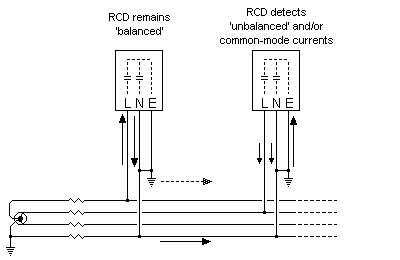|
To some, having a premises supplied exclusively from its own on-site HV/LV transformer where the Neutral and Earth are bonded at the secondary star point (TNS) and kept separate elsewhere throughout the installation, is similar to joining the separate incoming N & E conductors at the Main Earth Terminal (MET) thus creating a TNC-S supply. This argument is substantiated by the fact that the Neutral is effectively "beefed up" by combining it with the Earth system thus should lower any EMC/RFI emissions or susceptibility. Actually, a locally created TNS is no where near the same as TNC-S where the N-E bond occurs at the MET. The links above will allow you to investigate the differences in the actual supply connections, so will only concentrate on the negative aspects of the TNC-S system. As an aside; Having come from a country where TNS was the only accepted system, things such as RCD nuisance tripping was almost unheard of. Persistent tripping would normally point to a fault within the premises. In the UK, where TNC-S is so prevalent, householders often want to pull their hair out because of trips when their neighbour comes home and turns on the lights! Here's why.
With TNC-S the Neutral current, which would normally be fed on a balanced conductor sitting side-by-side with Live(s) in a TNS, is now being shared across the Neutral conductor and the Earth system (all the way back to the source and the Neutral is usually bonded to Earth at the source - this means the Neutral current flows down the Neutral conductor, Earth conductor(s), and through terra firma). In TNS, the Neutral conductor's impedance will mean the current will cause a voltage to appear on the Neutral at the load with respect to Earth. However, the forgotten part is the Live will suffer the same drop in voltage therefore the common mode voltage will be unaffected thus resulting in little (nothing is perfect) common mode noise on the Earth. As the combined system has the Neutral combined with Earth, the impedance is far reduced. But it still has impedance. The bad part is this means the Earth is raised to the same potential as Neutral therefore common mode noise cancellation is drastically reduced. And, in a TNC-S system the EMC/RFI radiation/susceptibility is also increased rather than decreased by this!
Furthermore; The Earth is a conductor (vs. Ground which is the buried system) and it now has potential on it with respect to terra firma. In a standalone system this tends to be much less of a problem than with one that is interconnected with other systems some distance away. Those some distance away will be at their own potential (unless they are running on TNS, which means their reference is terra firma). What occurs here is currents start flowing between the two systems because of this difference in earth-reference potential. The main issue is the currents will flow along the lines that interconnect them, these typically being data and signal lines. If both systems were TNS; One cannot guarantee that there would not be some current flowing between the two as there will always be some Earth voltage, but it will sure be significantly reduced as a result of employing TNS as a common mode of supply. As for the trips; What occurs here is one user changes his load which in turn affects the Neutral voltage which, as this is TNC-S, affects the Earth voltage. This potential rise on the Earth is 'seen' at the neighbour and is interpreted as non-subtractive common mode currents on the Live and Neutral, and as this is exactly how an RCD works it causes it to trip! TNS is great, but then comes along a UPS supplier and feeds the Neutral and Earth through to the load side and then wonders why the noise increases on both sides of the UPS. It's a matter of cancellation has been disrupted. I leave you with that puzzle for now. Related Pages:
© 13.07.04 |
 CAUSES:
CAUSES: